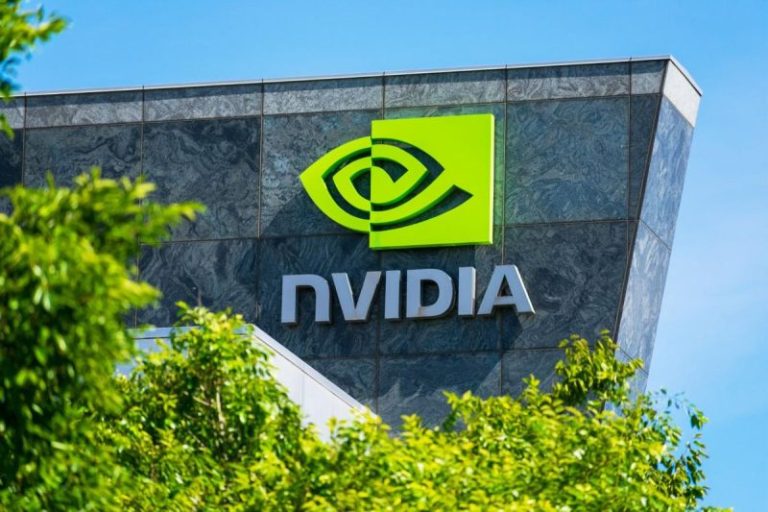Statistics Canada released October’s consumer price index (CPI) data on Monday (November 17). The figures showed that inflation softened during the month, falling to 2.2 percent year-over-year from 2.4 percent in September.
The agency cited a 9.4 percent decrease in gasoline prices as the main contributing factor, following a 4.1 percent decrease the previous month. However, less gasoline prices, CPI actually rose by 2.6 percent in both October and September.
Statistics Canada also noted slowing grocery prices, reporting a 3.4 percent year-over-year increase in October compared to the 4 percent recorded in September. Additionally, October saw the largest month-on-month drop in grocery prices since September 2020 at 0.6 percent.
On Thursday (November 20), StatsCan released September’s monthly mineral production survey.
The data shows that gold production declined month-over-month, while copper and silver output increased.
Gold production fell to 16,978 kilograms compared to 17,651 kilograms in August. Meanwhile, copper production rose significantly to 36.23 million kilograms from 30.47 million, and silver production jumped to 28,384 kilograms from 24,801 kilograms.
Shipments, however, increased broadly in September. Gold shipments rose to 19,025 kilograms from 16,289 kilograms in August, and silver shipments jumped to 33,296 kilograms from 25,636. Copper shipments increased the most, spiking to 44.04 million kilograms from 27 million.
For more on what’s moving markets this week, check out our top market news round-up.
Markets and commodities react
Canadian equity markets were in retreat this week.
The S&P/TSX Composite Index (INDEXTSI:OSPTX) was flat, gaining just 0.19 percent over the week to close Friday (November 21) at 30,160.65.
Meanwhile, the S&P/TSX Venture Composite Index (INDEXTSI:JX) lost 1.3 percent to 854.76. The CSE Composite Index (CSE:CSECOMP) had another bad week, dropping 3.44 percent to close at 145.59.
The gold price fell 0.43 percent to US$4,065.32 by 4:00 p.m. EST Friday. The silver price fared worse, dropping 1.07 percent to US$50.02.
Meanwhile, in base metals, the COMEX copper price ended the week down 0.3 at US$5.07 per pound.
The S&P Goldman Sachs Commodities Index (INDEXSP:SPGSCI) dropped 2.01 percent to end Friday at 546.41.
Top Canadian mining stocks this week
How did mining stocks perform against this backdrop?
Take a look at this week’s five best-performing Canadian mining stocks below.
Stocks data for this article was retrieved at 4:00 p.m. EST on Friday using TradingView’s stock screener. Only companies trading on the TSX, TSXV and CSE with market caps greater than C$10 million are included. Mineral companies within the non-energy minerals, energy minerals, process industry and producer manufacturing sectors were considered.
1. Sigma Lithium (TSXV:SGML)
Weekly gain: 64.01 percent
Market cap: C$1.48 billion
Share price: C$13.67
Sigma Lithium is a lithium mining company advancing its Grota do Cirilo operation in Minas Gerais, Brazil.
Operations at the Greentech processing facility were commissioned in 2023, with an annual nameplate capacity of 270,000 metric tons of lithium oxide concentrate. The company is currently constructing its Phase 2 expansion that will more than double that capacity.
In its third-quarter results released on November 14, Sigma reported that net revenue increased to US$28.5 million, 69 percent higher than Q2 and 36 percent higher than the same period in 2024.
The report also stated that Sigma upgraded its mining operations in Q3 with the goal of reaching the plant’s full capacity of 300,000 metric tons in 2026. As part of this process, Sigma is doubling its mining fleet. The company expects production to resume by the end of November, with full operational capacity expected in Q1 2026.
The report boosted Sigma’s share price, as did climbing lithium prices, which have gained more than 10 percent in November and more than 50 percent since bottoming out in June.
2. Li-FT Power (TSXV:LIFT)
Weekly gain: 52.63 percent
Market cap: C$201.24 million
Share price: C$4.35
Li-FT is a lithium exploration company advancing its flagship Yellowknife lithium project in the Northwest Territories, Canada.
The 1,843 hectare property, located east of the city of Yellowknife, hosts 13 spodumene-bearing pegmatites. Its current combined inferred resource estimate across eight of those pegmatites stands at 50.38 million metric tons of ore grading 1 percent lithium oxide for 1.25 million metric tons of lithium carbonate equivalent (LCE).
The company also owns the Cali project in the Northwest Territories, and the Pontax, Rupert and Moyenne projects in the Eeyou Istchee James Bay region of Québec, Canada.
On Tuesday, Li-FT filed a final base shelf prospectus to replace the previous prospectus that expired on October 21. The company said the new filing will permit it to offer common shares, warrants, subscription receipts, units or debt securities up to a total of C$200 million until it expires in December 2027.
Li-FT also said it was changing its financial year-end from November 30 to December 31 to better align with the timing of the company’s financial reporting and with its peers.
The company is another lithium stock benefiting significantly from rising lithium prices this week.
3. LithiumBank Resources (TSXV:LBNK)
Weekly gain: 45.59 percent
Market cap: C$32.45 billion
Share price: C$0.50
LithiumBank is a lithium exploration and development company advancing its Boardwalk and Park Place lithium brine projects in Alberta, Canada, both of which overlap with the Leduc and Swan Hills formations.
Boardwalk consists of 395,369 acres of brine-hosted licenses about 85 kilometers east of Grand Prairie in an area with a history of hydrocarbon extraction.
According to Boardwalk’s mineral resource estimate from a February 2025 technical report, the project hosts a measured resource of 1.67 million metric tons of LCE with an average grade of 81.2 milligrams per liter (mg/L), and an indicated resource of 3.52 million metric tons of LCE with an average grade of 81.8 mg/L, all within the Leduc formation.
Park Place, located 50 kilometers south of Boardwalk, consists of 1.4 million acres of licenses. A June 2024 mineral resource estimate demonstrated an inferred resource of 10.08 million metric tons LCE with a grade of 79.4 mg/L at the Leduc aquifer, and 11.6 million metric tons of LCE with an average grade of 80.9 mg/l at the Swan Hills aquifer.
The most recent news from the company came on Thursday, when LithiumBank reported that, following its award of C$3.9 million in funding for certain milestones through Alberta’s Emission Reduction Act in July, it is working to acquire a second past-producing well at Boardwalk.
LithiumBank is focused on commencing near-term production at Boardwalk using modular direct lithium extraction plants, which the company said it believes this second well can likely support.
Rising lithium prices also helped support LithiumBank this week.
4. Abcourt Mines (TSXV:ABI)
Weekly gain: 41.67 percent
Market cap: C$72.45 million
Share price: C$0.085
Abcourt Mines is a gold mining and development company focused on ramping up operations at its Sleeping Giant gold mine in the Abitibi region of Québec.
Sleeping Giant hosts an underground mine along with a mill capable of processing 750 metric tons per day. The property consists of four mining leases covering an area of 458 hectares and 69 claims.
A July 2023 preliminary economic assessment demonstrates an after-tax net present value of US$77.5 million with an internal rate of return of 33.3 percent over a payback period of 2.2 years.
The company has been working on restarting mining operations at the site throughout 2025, and achieved its first gold pour in September.
The most recent news came on November 11, when the company released an update from Sleeping Giant. In the announcement, the company stated that in October it had milled 2,563 metric tons of ore with a head grade of 6 grams per metric ton of gold, producing 475 ounces of gold.
Abcourt also said progress at the site was continuing with one stope in production and two more under development. Additionally, civil engineering was underway at the tailings facilities in preparation for a planned lift in summer 2026.
5. Pure Energy Minerals (TSXV:PE)
Weekly gain: 38.1 percent
Market cap: C$10.19 million
Share price: C$0.29
Pure Energy is a lithium exploration company that owns a 3 percent net smelter return (NSR) on the Clayton Valley lithium brine project in Nevada, United States.
The project consists of 950 placer claims covering 9,450 hectares. In September 2024, Pure Energy announced that its project partner, SLB, had completed an earn-in to acquire a 100 percent stake in Clayton Valley, leaving Pure Energy with its NSR.
Through 2023 and into 2024, SLB completed construction of a direct lithium extraction pilot plant at the site, with the first lithium production occurring in March 2024.
This Thursday, Pure Energy released its management discussion and analysis for the quarter ending September 30, 2025. In the report, the company restated its position in Clayton Valley, noting that it is receiving annual payments of US$400,000 from SLB until commercial production, after which time it will receive its 3 percent NSR on minerals produced.
Pure Energy’s share price increased significantly this week alongside rising lithium prices.
FAQs for Canadian mining stocks
What is the difference between the TSX and TSXV?
The TSX, or Toronto Stock Exchange, is used by senior companies with larger market caps, and the TSXV, or TSX Venture Exchange, is used by smaller-cap companies. Companies listed on the TSXV can graduate to the senior exchange.
How many mining companies are listed on the TSX and TSXV?
As of May 2025, there were 1,565 companies listed on the TSXV, 910 of which were mining companies. Comparatively, the TSX was home to 1,899 companies, with 181 of those being mining companies.
Together, the TSX and TSXV host around 40 percent of the world’s public mining companies.
How much does it cost to list on the TSXV?
There are a variety of different fees that companies must pay to list on the TSXV, and according to the exchange, they can vary based on the transaction’s nature and complexity. The listing fee alone will most likely cost between C$10,000 to C$70,000. Accounting and auditing fees could rack up between C$25,000 and C$100,000, while legal fees are expected to be over C$75,000 and an underwriters’ commission may hit up to 12 percent.
The exchange lists a handful of other fees and expenses companies can expect, including but not limited to security commission and transfer agency fees, investor relations costs and director and officer liability insurance.
These are all just for the initial listing, of course. There are ongoing expenses once companies are trading, such as sustaining fees and additional listing fees, plus the costs associated with filing regular reports.
How do you trade on the TSXV?
Investors can trade on the TSXV the way they would trade stocks on any exchange. This means they can use a stock broker or an individual investment account to buy and sell shares of TSXV-listed companies during the exchange’s trading hours.
Article by Dean Belder; FAQs by Lauren Kelly.
Securities Disclosure: I, Dean Belder, hold no direct investment interest in any company mentioned in this article.
Securities Disclosure: I, Lauren Kelly, hold no direct investment interest in any company mentioned in this article.
This post appeared first on investingnews.com





